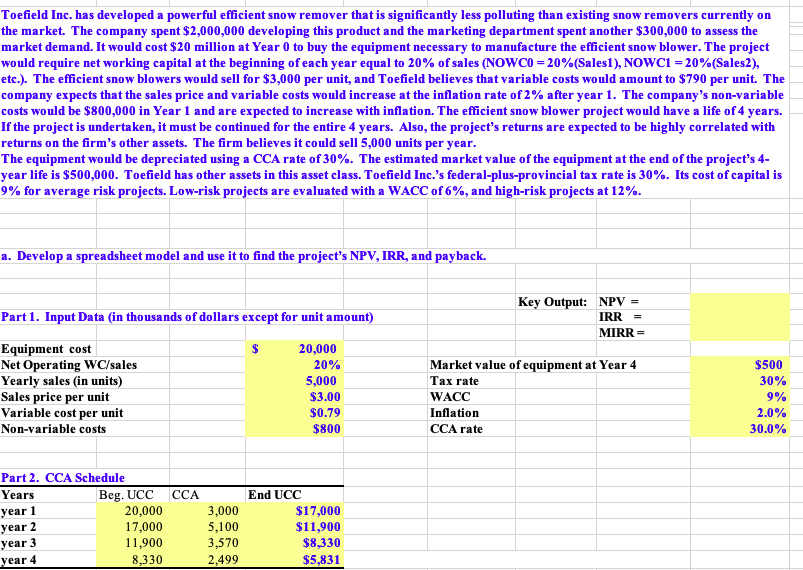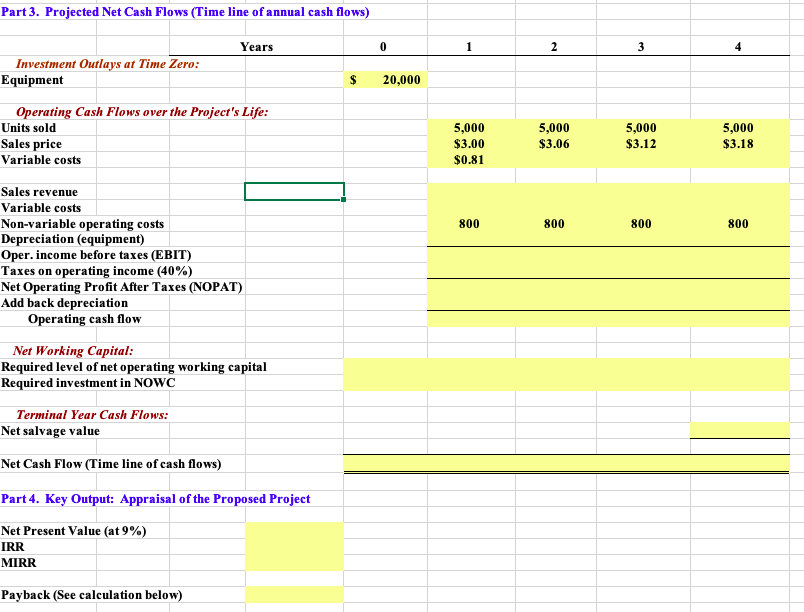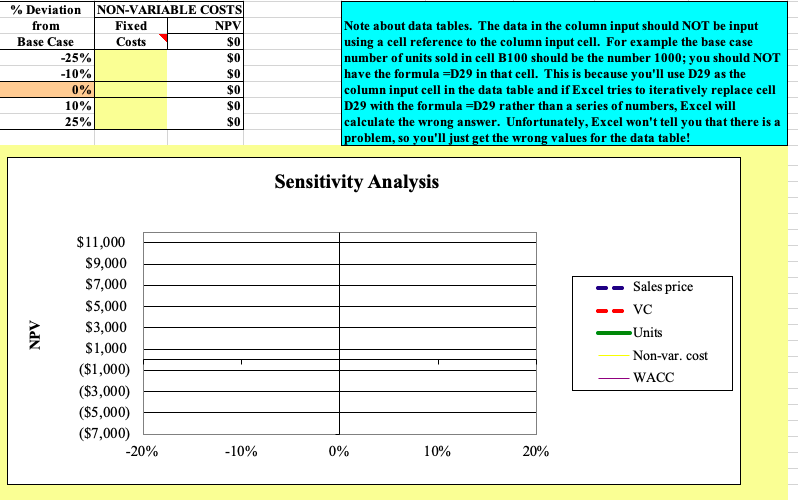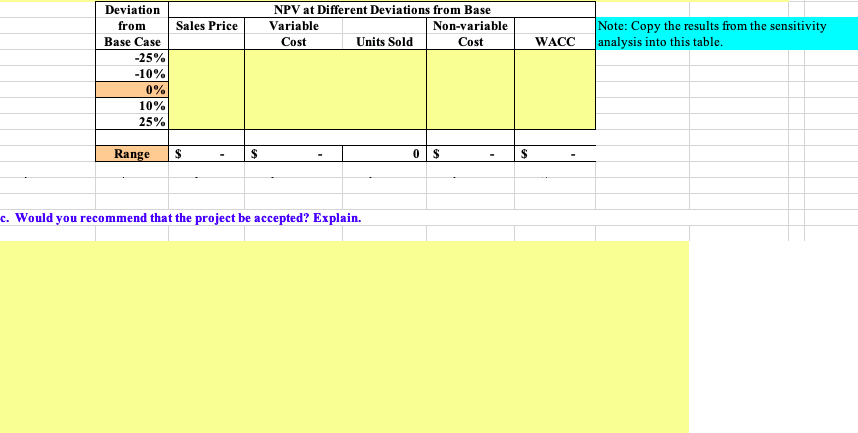Answered step by step
Verified Expert Solution
Question
1 Approved Answer
Toefield Inc. has developed a powerful efficient snow remover that is significantly less polluting than existing snow removers currently on the market. The company





Toefield Inc. has developed a powerful efficient snow remover that is significantly less polluting than existing snow removers currently on the market. The company spent $2,000,000 developing this product and the marketing department spent another $300,000 to assess the market demand. It would cost $20 million at Year 0 to buy the equipment necessary to manufacture the efficient snow blower. The project would require net working capital at the beginning of each year equal to 20% of sales (NOWC0 = 20% (Sales1), NOWC1 = 20%(Sales2), etc.). The efficient snow blowers would sell for $3,000 per unit, and Toefield believes that variable costs would amount to $790 per unit. The company expects that the sales price and variable costs would increase at the inflation rate of 2% after year 1. The company's non-variable costs would be $800,000 in Year 1 and are expected to increase with inflation. The efficient snow blower project would have a life of 4 years. If the project is undertaken, it must be continued for the entire 4 years. Also, the project's returns are expected to be highly correlated with returns on the firm's other assets. The firm believes it could sell 5,000 units per year. The equipment would be depreciated using a CCA rate of 30%. The estimated market value of the equipment at the end of the project's 4- year life is $500,000. Toefield has other assets in this asset class. Toefield Inc.'s federal-plus-provincial tax rate is 30%. Its cost of capital is 9% for average risk projects. Low-risk projects are evaluated with a WACC of 6%, and high-risk projects at 12%. a. Develop a spreadsheet model and use it to find the project's NPV, IRR, and payback. Part 1. Input Data (in thousands of dollars except for unit amount) Equipment cost Net Operating WC/sales Yearly sales (in units) Sales price per unit Variable cost per unit Non-variable costs Part 2. CCA Schedule Years year 1 year 2 year 3 year 4 Beg. UCC 20,000 17,000 11,900 8,330 CCA 3,000 5,100 3,570 2,499 20,000 20% End UCC 5,000 $3.00 $0.79 $800 $17,000 $11,900 $8,330 $5,831 Key Output: NPV = IRR = MIRR= Market value of equipment at Year 4 Tax rate WACC Inflation CCA rate $500 30% 9% 2.0% 30.0% Part 3. Projected Net Cash Flows (Time line of annual cash flows) Investment Outlays at Time Zero: Equipment Operating Cash Flows over the Project's Life: Units sold Sales price Variable costs Sales revenue Variable costs Non-variable operating costs Depreciation (equipment) Years Oper. income before taxes (EBIT) Taxes on operating income (40%) Net Operating Profit After Taxes (NOPAT) Add back depreciation Operating cash flow Net Working Capital: Required level of net operating working capital Required investment in NOWC Terminal Year Cash Flows: Net salvage value Net Cash Flow (Time line of cash flows) Part 4. Key Output: Appraisal of the Proposed Project Net Present Value (at 9%) IRR MIRR Payback (See calculation below) 0 $ 20,000 1 5,000 $3.00 $0.81 800 2 5,000 $3.06 800 3 5,000 $3.12 800 4 5,000 $3.18 800 Data for Payback Years % Deviation from Base Case -25% -10% 0% 10% 25% % Deviation from b. Conduct a sensitivity analysis to determine the sensitivity of NPV to changes in the sales price, variable costs per unit, and number of units sold. Set these variables' values at 10% and 25% above and below their base case values. Include a graph in your analysis. Evaluating Risk: Sensitivity Analysis I. Sensitivity of NPV to Changes in Inputs. Here we use an Excel "Data Table" to find NPV for different unit sales, variable costs, WACC, and sales prices, holding other thing constant. Base Case -25% -10% Net cash flow Cumulative CF Part of year required for payback: 0% 10% 25% 1st YEAR UNIT SALES Units Sold NPV $0 $0 $0 $0 $0 $0 VARIABLE COSTS Variable Costs NPV $0 $0 $0 $0 $0 $0 % Deviation from Base Case -25% -10% 0% 10% 25% % Deviation from Base Case 0.00 -25% -10% 0% 10% 25% WACC WACC 0.00 Sales Price SALES PRICE NPV 0 $0 $0 $0 $0 $0 0.00 NPV $0 $0 $0 $0 $0 $0 0.00 % Deviation |NON-VARIABLE COSTS from Base Case NPV $0 $0 $0 $0 $0 $0 NPV -25% -10% 0% 10% 25% Fixed Costs $11,000 $9,000 $7,000 $5,000 $3,000 $1,000 ($1,000) ($3,000) ($5,000) ($7,000) -20% -10% Note about data tables. The data in the column input should NOT be input using a cell reference to the column input cell. For example the base case number of units sold in cell B100 should be the number 1000; you should NOT have the formula =D29 in that cell. This is because you'll use D29 as the column input cell in the data table and if Excel tries to iteratively replace cell D29 with the formula =D29 rather than a series of numbers, Excel will calculate the wrong answer. Unfortunately, Excel won't tell you that there is a problem, so you'll just get the wrong values for the data table! Sensitivity Analysis 0% 10% 20% Sales price VC -Units Non-var. cost WACC Deviation from Base Case -25% -10% 0% 10% 25% Sales Price Range $ $ NPV at Different Deviations from Base Variable Cost Non-variable Cost Units Sold c. Would you recommend that the project be accepted? Explain. 0 $ $ WACC Note: Copy the results from the sensitivity analysis into this table.
Step by Step Solution
★★★★★
3.47 Rating (154 Votes )
There are 3 Steps involved in it
Step: 1
Part1 In thousands of dollars except for unit amount Equipment cost 20000 Net WCsales 2100 Tax rate 30 Yearly salesunits 3500 WACC 6 for high risk pro...
Get Instant Access to Expert-Tailored Solutions
See step-by-step solutions with expert insights and AI powered tools for academic success
Step: 2

Step: 3

Ace Your Homework with AI
Get the answers you need in no time with our AI-driven, step-by-step assistance
Get Started


